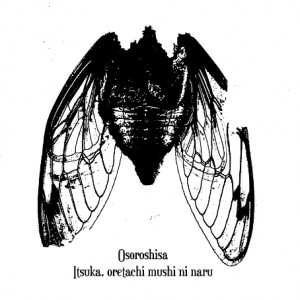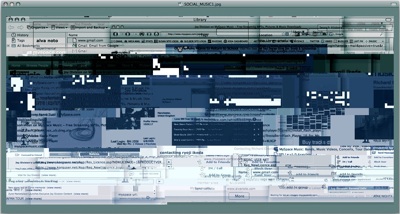Bang on a Can is a multi-faceted musical organization based in New York City. It was founded in 1987 by three American composers who remain its artistic directors: Julia Wolfe, David Lang, and Michael Gordon (photo). It is a major force in the presentation of new concert music, and has presented hundreds of musical events worldwide.
It is perhaps best known for its Marathon Concerts during which an eclectic mix of pieces are performed in succession over the course of many hours while audience members, who are encouraged to maintain a “jeans-and-tee-shirt informality,” are welcome to come and go as they please. [wikipedia]
The three founders are still composing. Some interesting pieces:

 In the August and September 1977, two Voyager spacecraft were launched to fly by and explore the great gaseous planets of Jupiter and Saturn.
In the August and September 1977, two Voyager spacecraft were launched to fly by and explore the great gaseous planets of Jupiter and Saturn. Non c’è niente come rimettere in ordine una casa che contiene, fra l’altro, varie migliaia di dischi (CD e vinili) sparsi fra diversi mobili, per ritrovare cose che non ricordavi di avere. Orologi russi, vecchie foto in cui fai fatica a capire chi c’è e anche qualche disco che non ascoltavi da una vita.
Non c’è niente come rimettere in ordine una casa che contiene, fra l’altro, varie migliaia di dischi (CD e vinili) sparsi fra diversi mobili, per ritrovare cose che non ricordavi di avere. Orologi russi, vecchie foto in cui fai fatica a capire chi c’è e anche qualche disco che non ascoltavi da una vita.



 Un po’ di sana aggressione sonora in stile post free jazz europeo non fa mai male. Dalla netlabel Insubordinations, l’ultimo lavoro del gruppo svizzero
Un po’ di sana aggressione sonora in stile post free jazz europeo non fa mai male. Dalla netlabel Insubordinations, l’ultimo lavoro del gruppo svizzero 
 Nanimo nai wakusei means “empty planets” in Japanese and is an apt description for key elements of Tim Salden’s music as Osoroshisa. It reflects the width of uninhabited and lonesome worlds and how time becomes a secondary factor on an empty planet that lacks any point of reference for perceiving its continuous passage. In the broader sense, it may also refer to isolated persons living in a solar system of their own, without a way of taking notice of other worlds apart from theirs and where chains of events have gradually been replaced by a constant train of thoughts. Accordingly, the music is located between drone and dark ambient without being particularly representative of either genre and evolves slowly, with recurrent figures weaved into persistent drones and subtle changes in modulation rather than thematic variation and progression.
Nanimo nai wakusei means “empty planets” in Japanese and is an apt description for key elements of Tim Salden’s music as Osoroshisa. It reflects the width of uninhabited and lonesome worlds and how time becomes a secondary factor on an empty planet that lacks any point of reference for perceiving its continuous passage. In the broader sense, it may also refer to isolated persons living in a solar system of their own, without a way of taking notice of other worlds apart from theirs and where chains of events have gradually been replaced by a constant train of thoughts. Accordingly, the music is located between drone and dark ambient without being particularly representative of either genre and evolves slowly, with recurrent figures weaved into persistent drones and subtle changes in modulation rather than thematic variation and progression.